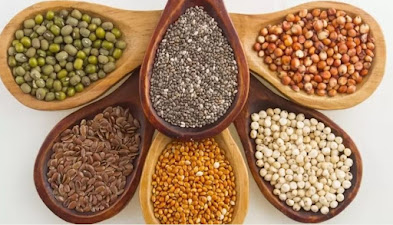Embracing Millets: A Diabetes-Friendly Grain Guide
In recent times, there's been a surge in the popularity of millets, hailed for their nutritional prowess and versatility, especially among those seeking healthier dietary options. These small-seeded ancient grains, traditionally known as ‘Mota Anaj,’ boast a natural gluten-free composition and are packed with essential nutrients, making them an attractive addition to diets aiming for optimal health, particularly for individuals managing diabetes.
Millets: A Nutritional Powerhouse
Millets, encompassing various varieties like foxtail millet, finger millet (ragi), little millet, pearl millet (bajra), and barnyard millet, offer a myriad of health benefits. Rich in fiber, protein, vitamins, and minerals, millets stand out for their ability to regulate blood sugar levels effectively, thanks to their low glycemic index and slow digestion rate. This gradual release of glucose into the bloodstream aids in preventing spikes in blood sugar, a crucial aspect for individuals with diabetes.
Varieties Tailored for Diabetes Management
1.Foxtail Millet: Packed with dietary fiber, foxtail millet slows down glucose absorption, making it an ideal choice for diabetes management. Its versatility allows it to be incorporated into various dishes, from salads to soups.
2. Finger Millet (Ragi): Gluten-free and abundant in fiber and polyphenols, ragi helps lower blood sugar levels and enhances insulin sensitivity. Its flour can be seamlessly integrated into everyday recipes like rotis, dosas, or even baked goods.
3. Little Millet: With its rich content of complex carbohydrates, fiber, and protein, little millet proves beneficial for stabilizing blood sugar levels. Additionally, it provides essential nutrients like iron and B vitamins, promoting overall well-being.
4. Pearl Millet (Bajra): Known for its low glycemic index and high fiber content, pearl millet flourishes as a sustainable energy source while aiding in blood sugar regulation. Its flour can be utilized in various culinary creations, from flatbreads to porridge.
5.Barnyard Millet: Another low-glycemic-index gem, barnyard millet, brims with fiber and essential nutrients like magnesium and phosphorus, contributing to stable blood sugar levels. Its adaptability allows it to be used in diverse dishes, from porridge to stir-fries.
Incorporating Millets into Your Diet
The simplicity and versatility of millets make them easy to integrate into daily meals. Whether in salads, soups, porridge, stir-fries, or baked goods, millets lend themselves to diverse culinary creations, catering to various tastes and preferences.
Beyond Diabetes: Holistic Health Benefits
Apart from aiding in diabetes management, millets offer a plethora of health benefits. They promote heart health, aid in weight management, and support digestive health due to their high fiber content. Additionally, millets are a rich source of essential nutrients crucial for overall well-being, potentially reducing the risk of chronic diseases.
Millets: Environmentally Friendly and Culturally Rich
Millets boast environmental sustainability, requiring minimal water and inputs for cultivation. Their adaptability to diverse climates and soil conditions makes them an eco-friendly choice, contributing to sustainable farming practices and food security. Moreover, millets hold cultural significance in various cuisines worldwide, adding depth and heritage to culinary traditions.
Conclusion: Embrace the Millet Movement
Incorporating millets into your diet not only enhances your culinary experiences but also promotes health and sustainability. Whether you're managing diabetes or simply aiming for a healthier lifestyle, millets offer a delicious and nutritious solution. Explore the world of millets today and savor the myriad benefits they bring to the table.




Comments
Post a Comment